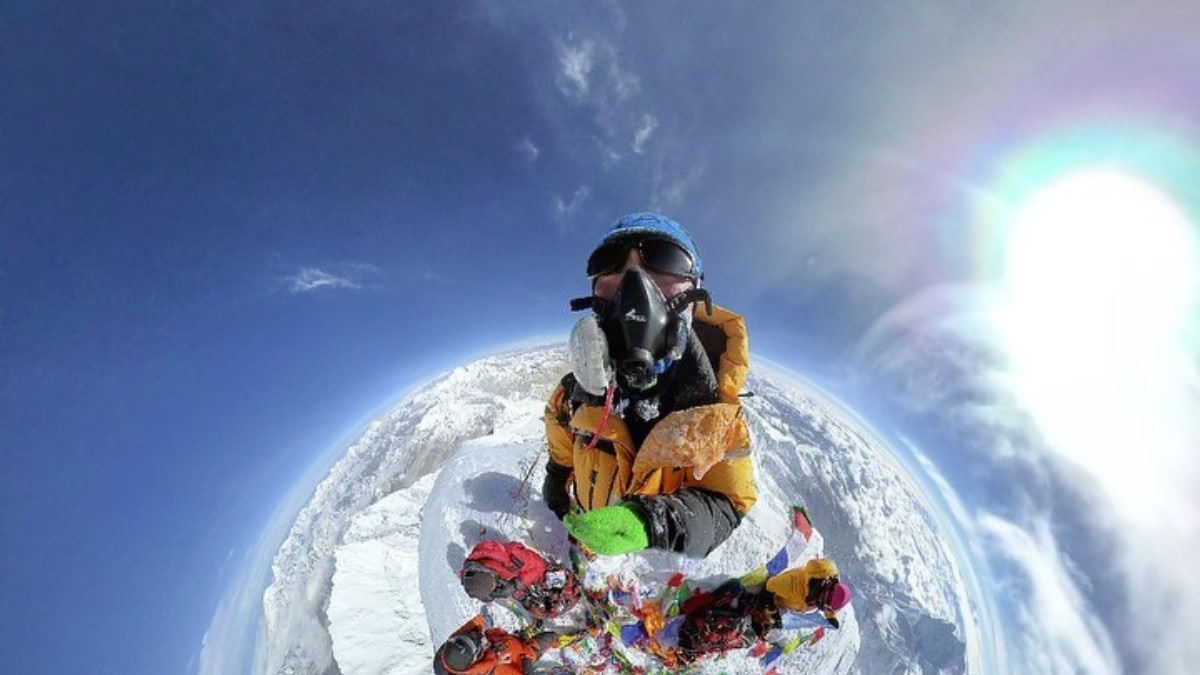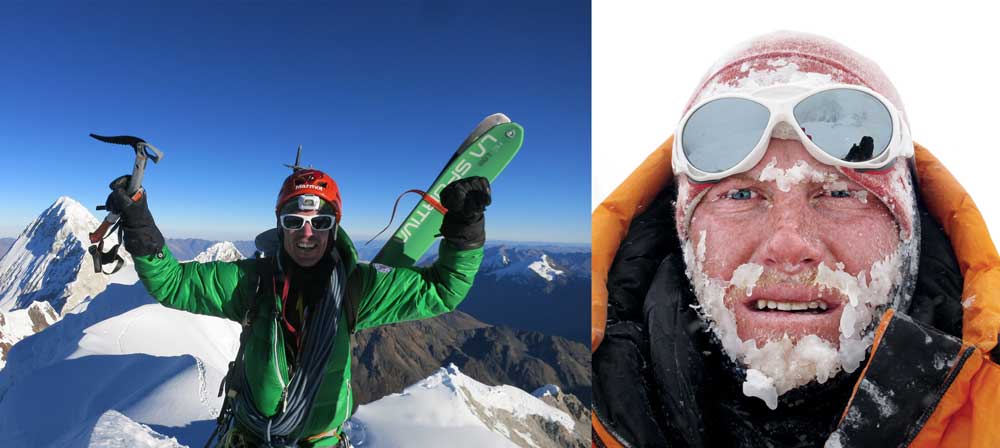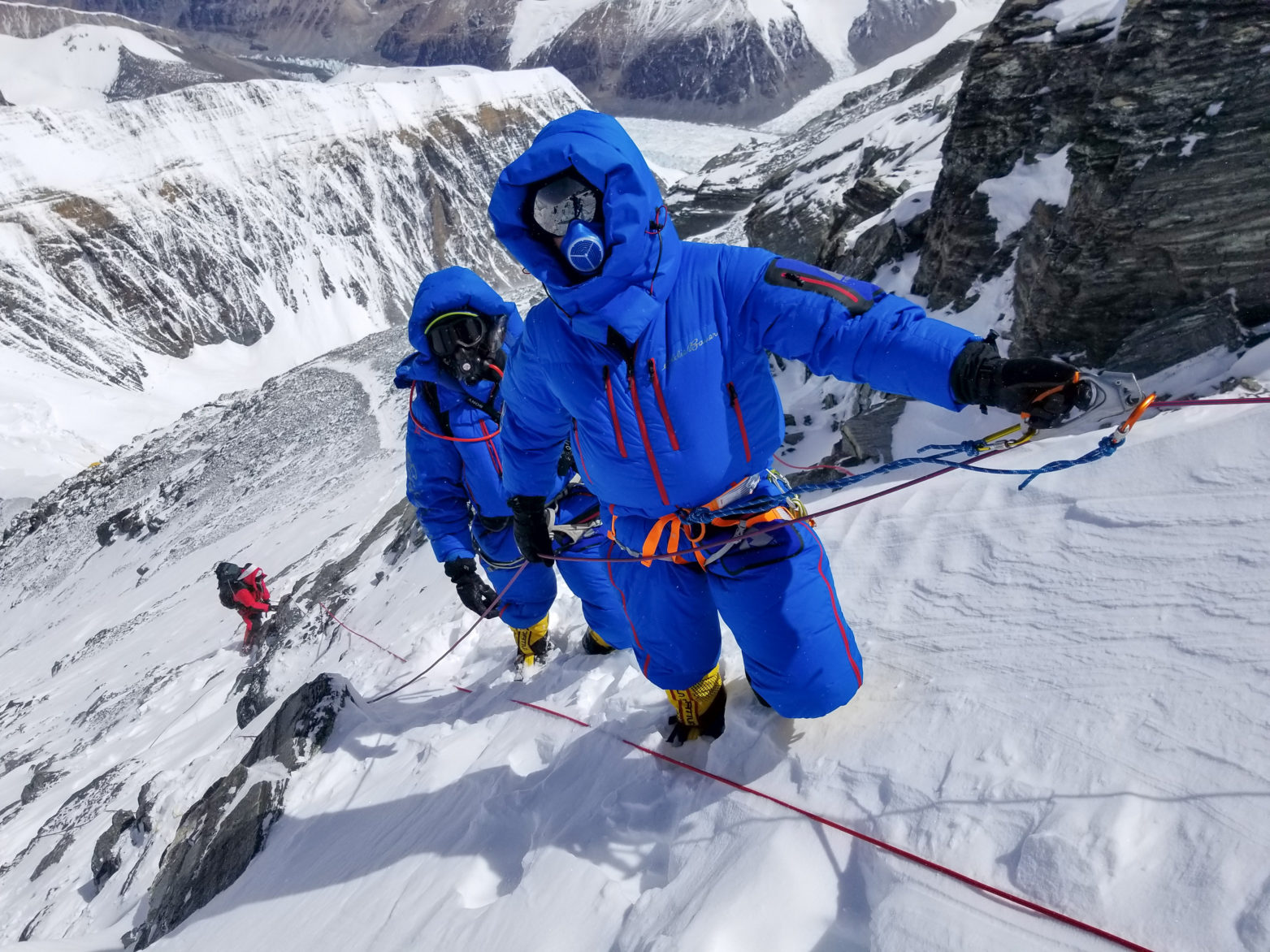The Titan tragedy highlights the burgeoning trend of cavalier high-net-worth individuals exploring some of the most inhospitable places on Earth.

IT WAS LESS than an hour off the coast of Greenland that Jules Mountain began to question his sanity. The British entrepreneur was completing the second leg of his eight-day attempt to become the first person to fly a Bell 505 light helicopter across the Atlantic. “I had to go over freezing fog at 14,500 feet or ice would build up on the vehicle’s blades,” he says. “It was -14 degrees Celsius and the high altitude meant I was gasping for air. And then I worked out I had 30 minutes’ worth of fuel remaining.”

Mountain was flying the helicopter from Montreal to Guernsey: a nearly 4,000-mile journey that included fuel stops in the frozen wastelands of Northern Canada, Greenland, and Iceland. He says he took on the challenge when he realized the helicopter’s range was 350 miles and that it could fly only three hours at a time. It meant his longest leg required pumping fuel mid-flight.
“My previous goal was to trek to the North Pole, but it felt too easy,” says Mountain. “It didn’t feel dangerous enough: You could get rescued at any moment. Whereas with this challenge, flying over icebergs and forests far from civilization, an engine failure might mean death. And that’s when the adrenaline rush hits—it’s when you feel most alive.”
Mountain, who has also summited Everest, is one of many businesspeople taking on extreme adventures around the world. British billionaire Hamish Harding and Pakistani British executive Shahzada Dawood were among the passengers aboard the Titan submersible that disappeared in the North Atlantic Ocean on June 18. Operated by OceanGate, a US company that builds and launches manned submersibles, Titan was part of a tourist expedition to observe the wreckage of the Titanic at a depth of about 12,500 feet.

On June 22, remains from Titan were located by a remote-controlled underwater search vehicle about 500 meters from the wreckage of the Titanic, roughly 370 miles off the coast of Newfoundland. The US Coast Guard believes all five passengers died following a catastrophic implosion.
The extreme tourism industry is niche, but growing. A swelling number of companies have emerged to facilitate dangerous adventures for the super-rich. OceanGate began offering trips aboard Titan to the site of the Titanic wreckage in 2021; seats on the latest, ill-fated trip cost $250,000 per person. However, safety concerns were raised as early as 2018, during Titan’s quality-control stage, including questions about the 6.7-meter vessel’s experimental carbon-fiber hull structure (typically, deep-diving subs have hulls made from metal) and lack of industry certification. Past passengers have also shared details of problems with communication, navigation, and buoyancy during their 12-hour round trip to the Titanic.
With such extreme adventures, the work of operators is naturally risky. Seattle-based mountaineer Garret Madison offers bespoke expeditions to unnamed, unclimbed Himalayan peaks through his company, Madison Mountaineering. He explains that the average Everest death rate is 1 percent—a higher figure than for US service members in recent conflicts. “It’s the exhilaration of being on the mountain and coming face-to-face with danger that’s so attractive.”

Since the pandemic, Madison has noticed an uptick in high-net-worth individuals booking out entire expeditions. “One client bought a whole trip to climb Mount Vinson in Antarctica for $200,000 last year,” he says. “It’s the latest trend: billionaires wanting their own private adventure with friends; they fly to Antarctica in a private jet. It’s next-level.”
Although his mountain expeditions are high-end, Madison says they come with minimum comfort. The greatest luxury he offers, he adds, is at Everest base camp: Warm showers, yoga sessions, and a dining tent with a movie screen are among the amenities on the $75,000 excursion. “The guys that come on my adventures ultimately want to suffer a little bit—that’s how they feel alive. Otherwise, they’d be staying at a Four Seasons five-star resort somewhere.”
However, a cottage industry of luxury extreme tourism also exists. White Desert Antarctica offers premium accommodation near the South Pole for $15,000 a night, replete with heated, opulently furnished pods and private chefs. Harding had also done that trip. “Hamish has been a true friend to White Desert for many years,” founder Patrick Woodhead said in a statement. “He has traveled with us to Antarctica a number of times, including with astronaut Buzz Aldrin when he visited.”

With these extreme tourism companies, safety generally comes with a high price tag. Madison says his service offers networks of expert guides and logistical know-how, as well as Western and Sherpa teams that coach, assist, and lead adventurers 8,000 meters above sea level. Extra oxygen, good food, and enhanced communications are also provided. “But you can do Everest cheaply and climb with your own tent and without a guide,” says Mountain. “There are plenty of operators that offer a rudimentary service—and that’s when it can get really dangerous. You’re left on your own.”
OceanGate appears to have had its feet in both camps. As the sole tourist operator providing trips to see the Titanic—and Titan one of only a handful of manned submersibles capable of reaching 12,500-foot depths—tickets weren’t cheap. At the same time, conditions inside the sub were far from luxurious, and the dive carried considerable risks. OceanGate’s waiver not only mentions death three times on page one, Titan was bolted from the outside—leaving those inside to survive on a finite amount of oxygen and rely on external support to get out of the sub, even after surfacing. The vessel was also controlled by a modified video game controller. “No one going on board would have been under any illusions that it was safe,” says Mountain. “That’s part of the appeal: The wreck is incredibly inaccessible, dangerous to visit, and steeped in mythology. And very few people have done it.”
Grace Lordan, associate professor in behavioral science at the London School of Economics, says these dangerous expeditions have superseded luxury items for thrill-seeking entrepreneurs. “Pleasure and purpose tend to determine happiness, and it used to be about material purchases and philanthropy. Over time, redistributing wealth still provides purpose, but pleasure is harder to attain.”

Ego is also a factor, says Lordan. “Luxury products are more available to the masses now. And we all want better dinner party anecdotes. So entrepreneurs, who tend to have a higher tolerance for risk, are increasingly desiring experiences that very few others have done.” They’ve already achieved the extraordinary feat of establishing major companies, Lordan explains, so now they want to push themselves in their personal lives.
These throwback explorations—climbing a mountain or crossing the ocean—are also a way for billionaires, many of whom have accumulated their wealth through digital transactions, to experience their physical limits in the face of mortal danger.

“The demographic is mostly men in their fifties and sixties, looking to feel alive,” says Madison. “They want to traverse the Khumbu Icefall or the northern ridge of Everest’s death zone, rather than just sitting behind a desk and watching their net worth accumulate on a screen. The closer you perceive death, the more alive you feel.”
Mountain completed his transatlantic helicopter flight in July 2020. It was a self-organized trip, during the height of the pandemic, arranged through the Canadian, Danish, and Icelandic authorities. As a pilot, he was exempt from Covid-19 restrictions. “It was a bonkers idea, but being an entrepreneur means being very driven: You want to push boundaries and prove you’re in a different capacity to others. And it was such a rush—when I reached Scotland I knew it was the home straight, I was celebrating.”
The Titan tragedy underlines the reality that, by their nature, these kinds of extreme adventures mean dicing with death. But therein lies the appeal. “These challenges will always come with risk,” says Mountain. “Otherwise, everyone would be doing them.”





